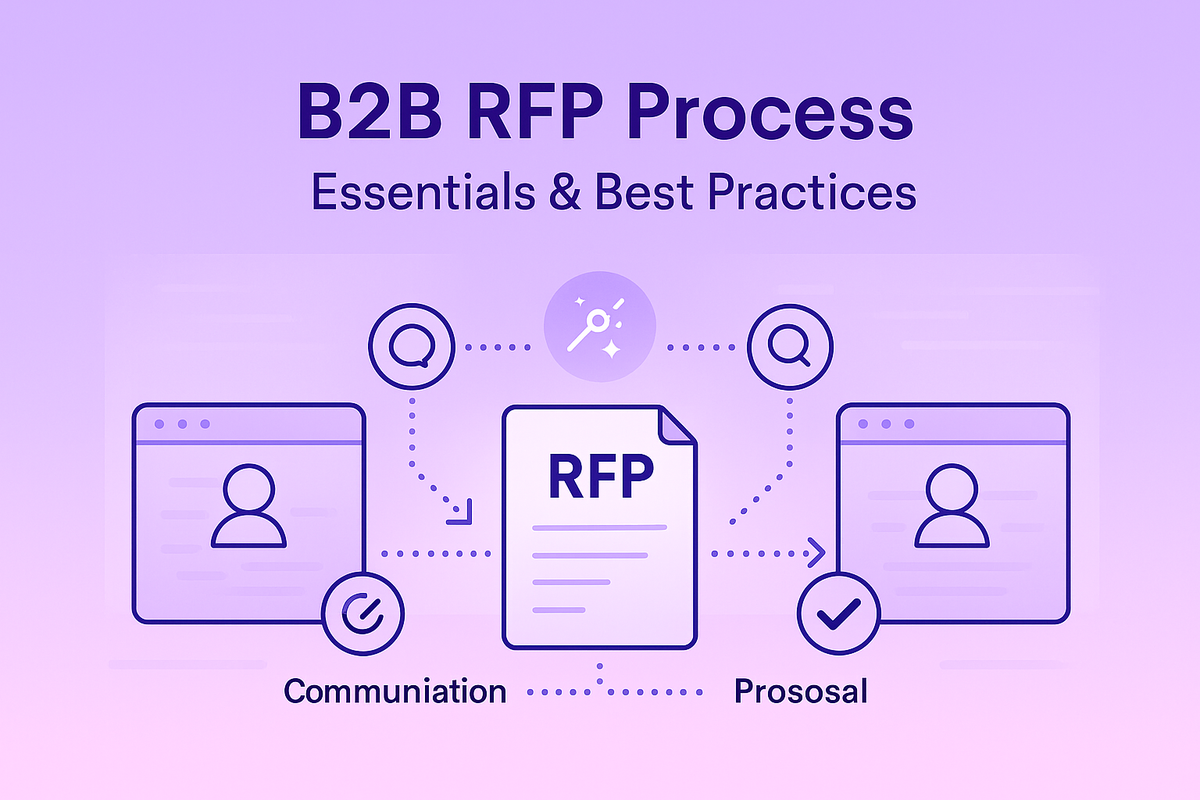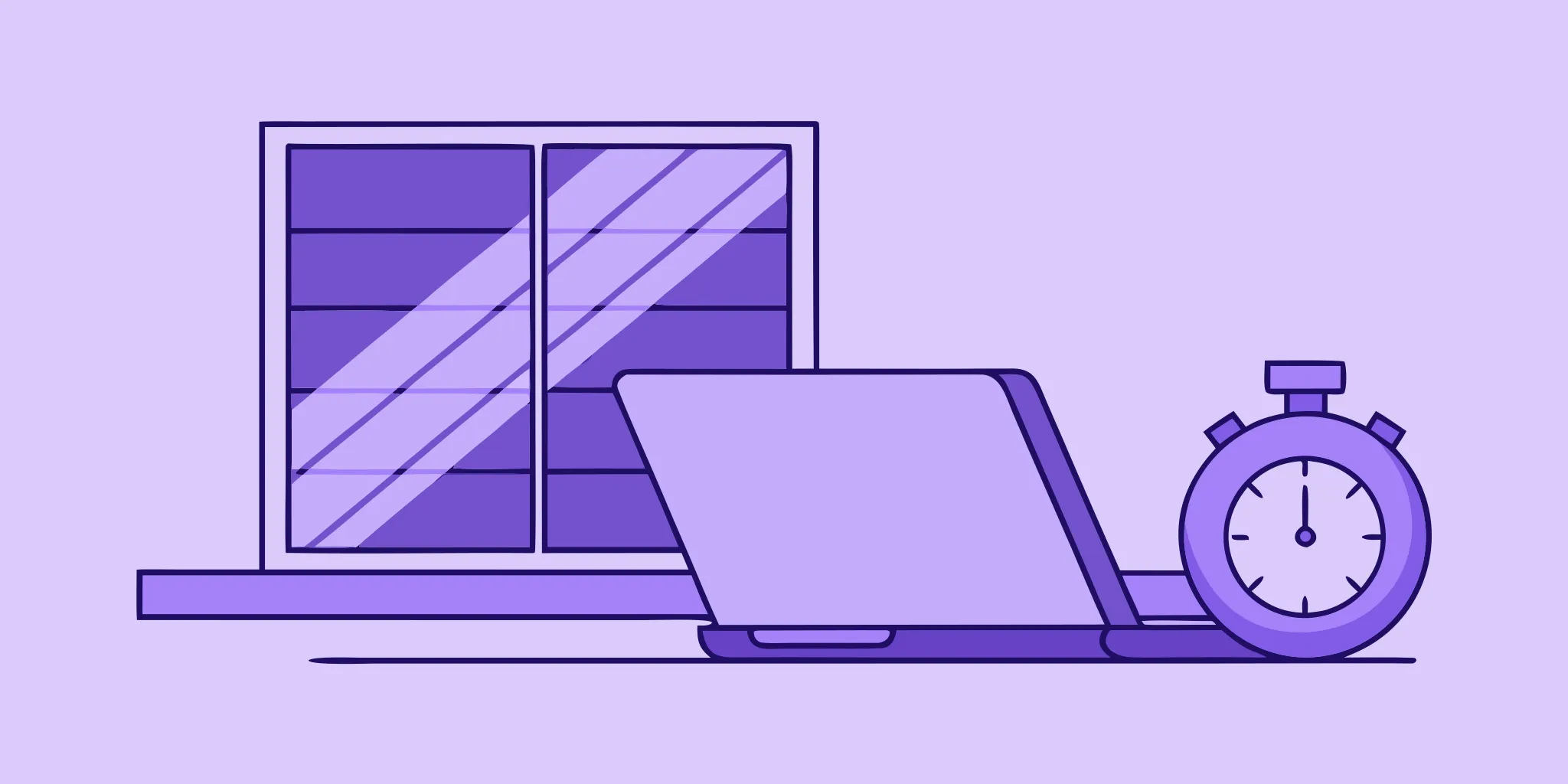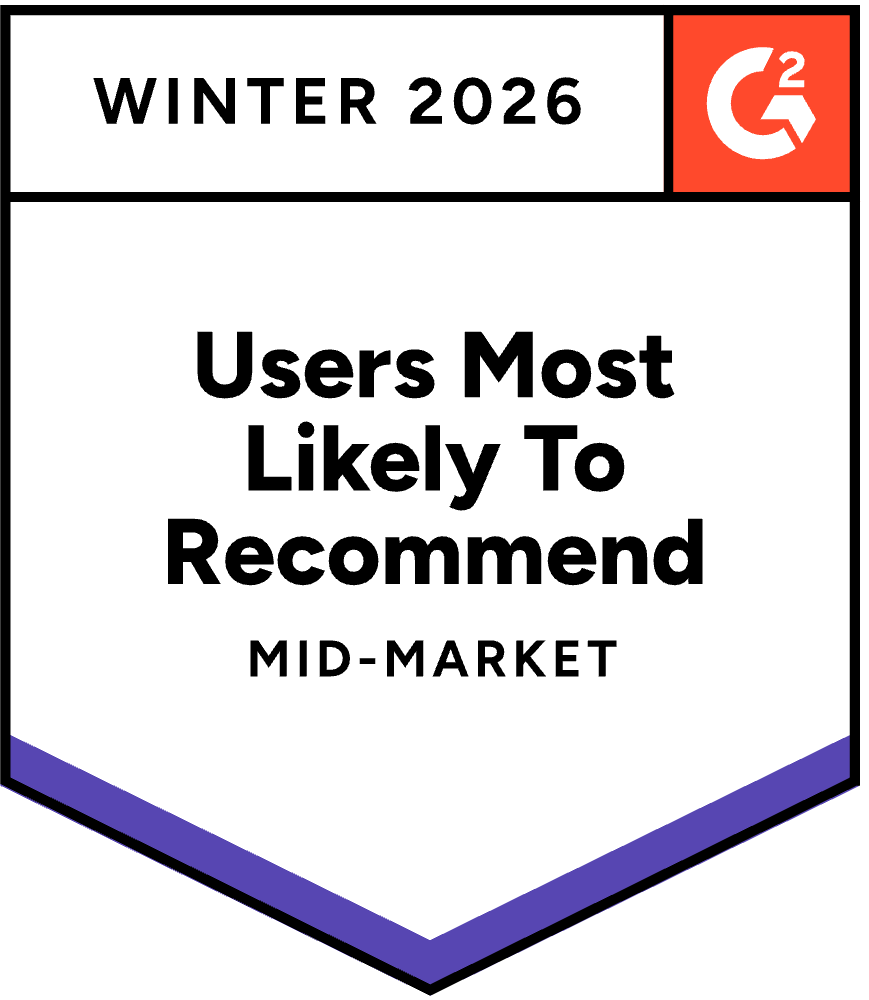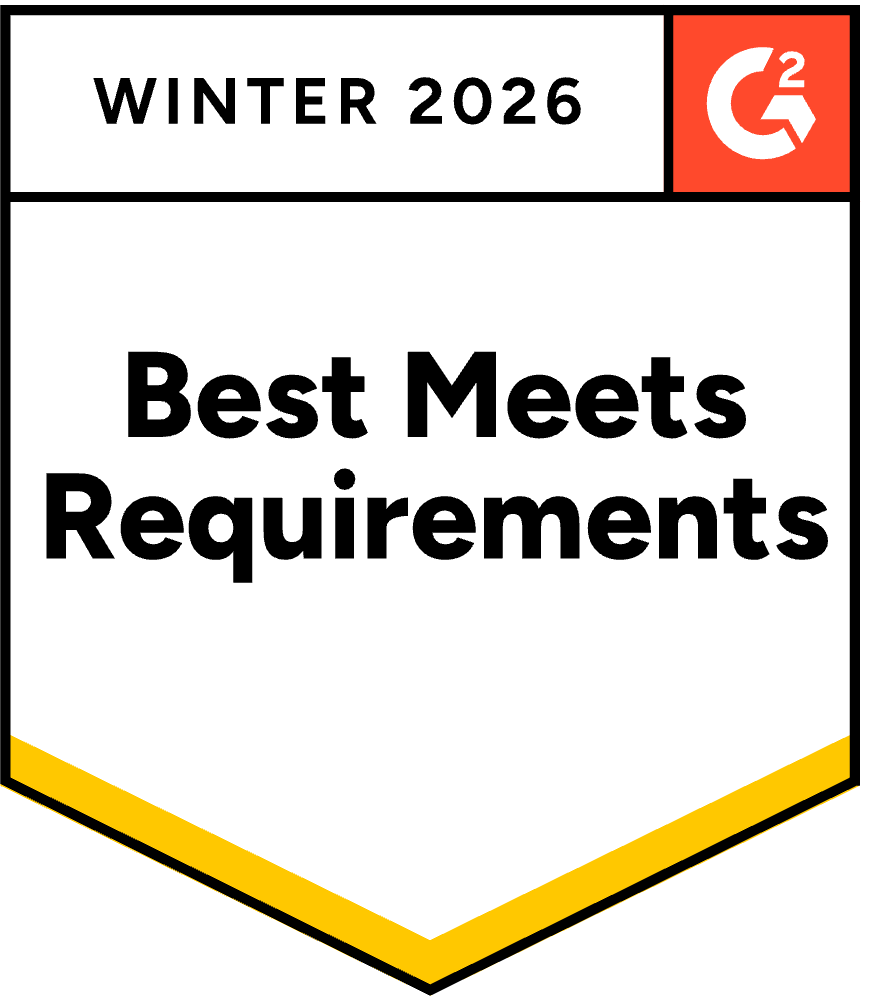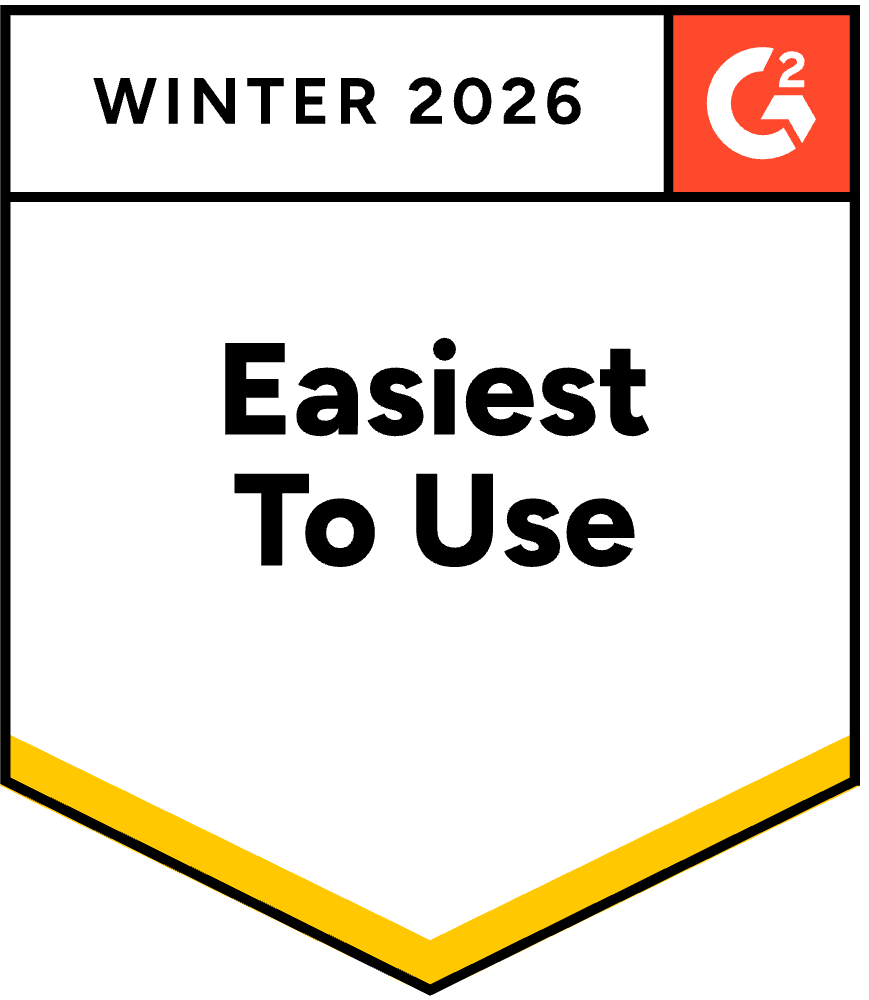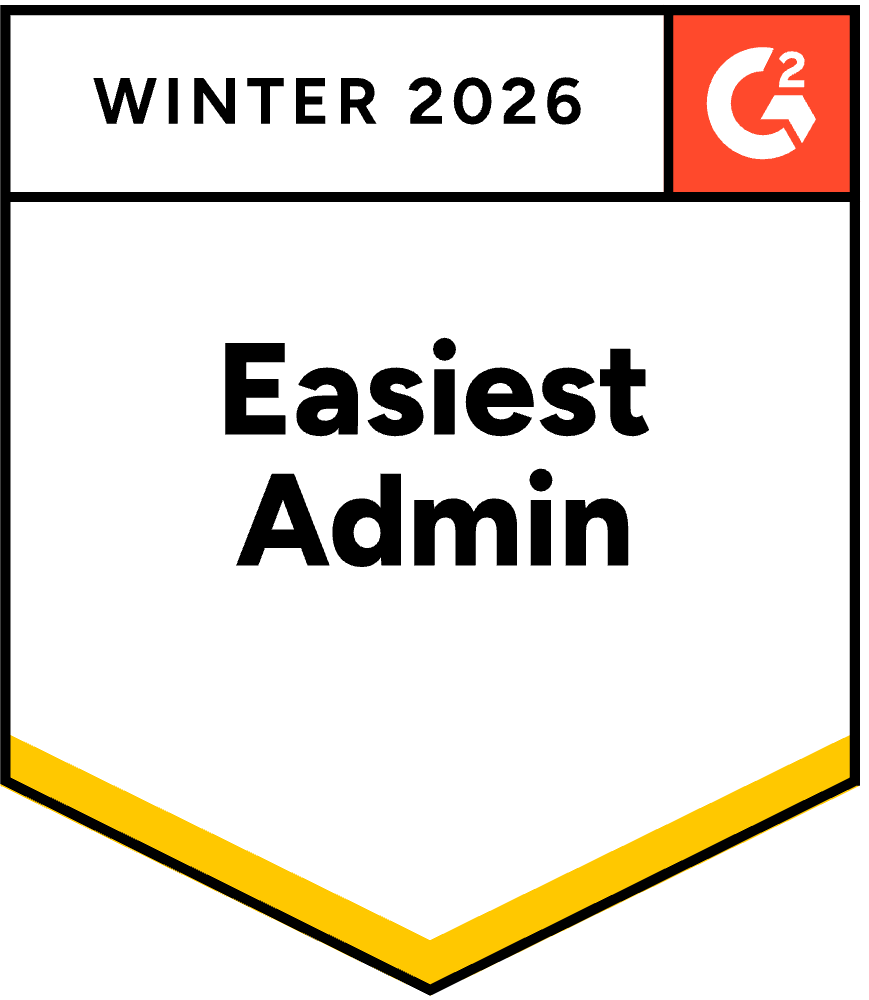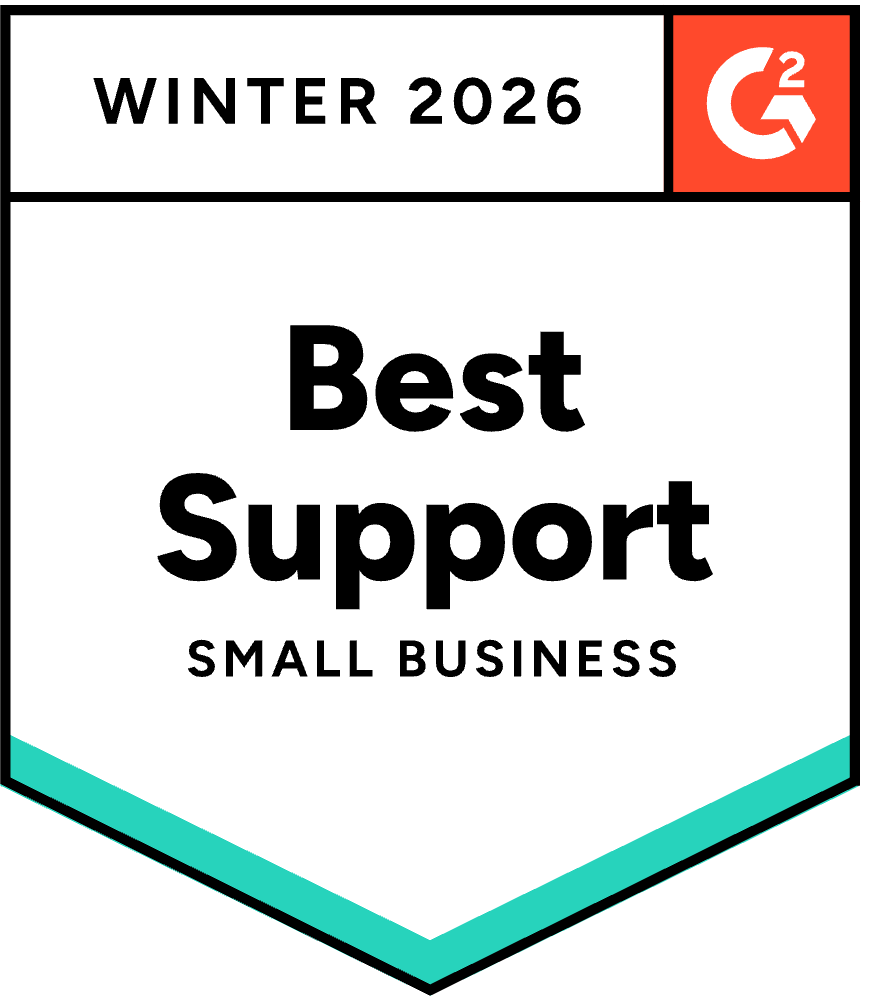12 Best AI Tools for Sales Proposals That Win
November 6, 2025
By
Evie Secilmis

How much time does your sales team actually spend selling? Too often, they're bogged down by administrative tasks—building proposals, RFPs, and SOWs from scratch instead of closing deals. This is where the best AI tool for sales proposals changes the game. The right platform acts as a writing assistant for creating business proposals, streamlining the entire process for your team. It handles the heavy lifting—pulling pre-approved content from saved templates and ensuring brand consistency—freeing your people to focus on what they do best. This isn't just about working faster; it's about working smarter.
Key Takeaways
- Automate the process, not just the words: A great proposal tool acts as a central hub for your team, automating tedious tasks like finding correct answers and formatting documents so you can focus on strategy and personalization.
- Match the tool to your biggest challenge: Before looking at demos, pinpoint your main bottleneck. Whether you're buried in complex RFPs or need to create visually stunning sales decks, choosing software designed for your specific problem is key to a successful investment.
- Use analytics to refine your approach and win more: The right software provides data on how clients interact with your proposals. Tracking what gets read and where people drop off gives you the insights needed to make data-driven improvements and increase your win rate over time.
So, What's a Proposal Writing Assistant?
Let’s be honest, creating a sales proposal from scratch can be a real grind. You’re juggling information from different teams, trying to find that perfect answer you know you’ve used before, and racing against a deadline. It’s a high-stakes process where a single mistake or a missed detail can cost you the deal. This is exactly where a proposal writing assistant comes in to change the game.
Think of it as your team's secret weapon for responding to RFPs, RFIs, and other complex sales documents. A proposal writing assistant is a tool designed specifically to streamline this entire workflow. It’s not just a fancy spell-checker; it’s a smart system that helps you generate accurate, high-quality proposals in a fraction of the time. These tools often use AI to pull the most relevant and up-to-date information from a central content library, so you're not constantly reinventing the wheel.
By automating the repetitive parts of the process, these platforms help you manage everything from initial drafts to final submissions. They ensure your proposals are not only compelling and visually appealing but also perfectly consistent with your brand voice. The main goal is to solve the time-consuming nature of proposal creation, freeing up your sales team to focus on what they do best: building relationships and closing deals.
Why Bother with a Proposal Tool Anyway?
Okay, I get it. The last thing your team needs is another piece of software to learn. But a proposal tool isn't just another line item in your tech stack; it's a fundamental shift in how your team operates. It’s about trading hours of frustrating, repetitive work for more time spent on strategy and client relationships. When you automate the tedious parts of creating RFPs and SOWs, you’re not just moving faster. You’re giving your team the bandwidth to produce higher-quality, more personalized proposals that actually stand out from the competition. This directly translates into two things every sales leader cares about: a better win rate and a more efficient team.
The Impact on Your Win Rate
Let's talk numbers. According to one study, sales teams that use proposal software win 59% more deals. That’s a massive difference, and it’s not just about luck. These tools help you respond faster, and in sales, speed is a huge advantage. When a potential client receives a polished, professional, and accurate proposal just hours after a request, it sends a powerful message. It shows you’re organized, attentive, and serious about their business. This speed can even shorten the sales cycle, with some data showing that proposals sent through these platforms are often won within 24 hours of being opened. By eliminating last-minute scrambles and ensuring brand consistency, you present a unified, expert front every single time.
How Much Time You Can Save
Imagine your team creating a complex proposal in 17 minutes or less. It sounds impossible, but that’s the reality for teams using modern proposal tools. By centralizing your best content and automating document creation, you can slash the time it takes to generate a first draft from hours or days to mere minutes. This isn't about cutting corners; it's about letting technology handle the copy-pasting, formatting, and searching for that one perfect case study. This reclaimed time is invaluable. Instead of getting bogged down in administrative work, your sales reps can focus on what truly matters: talking to prospects, understanding their needs, and building the relationships that close deals.
The Best AI Tools for Winning Sales Proposals
Finding the right proposal writing tool can feel overwhelming with so many options on the market. The key is to match the software to your team’s specific needs. Are you spending most of your time on complex RFPs and security questionnaires? Or are you focused on creating visually stunning, interactive sales proposals? Each tool on this list has a unique strength, so think about your biggest bottlenecks and where you need the most support.
From AI-powered response automation to beautiful design templates, these platforms are built to help you create winning proposals faster. We’ve broken down the top contenders to help you find the perfect fit for your sales process. Let's look at what makes each one stand out.
HeyIris.ai: The AI-Powered RFP Specialist
If your team is buried in RFPs, RFIs, and security questionnaires, HeyIris is designed for you. It’s less about visual design and more about speed and accuracy for complex, text-heavy documents. The AI-powered platform acts as a central knowledge hub, pulling the most accurate, up-to-date answers for any question. This drastically cuts down the time it takes to create a first draft. The real advantage is that it fits into your workflow, not the other way around. It offers robust security and seamless integrations with your existing tech stack, making it a powerful assistant for teams focused on winning technical and high-stakes deals.
For AI-Powered Content Automation
The real magic of a tool like HeyIris lies in its ability to serve as a central brain for your entire team. It automates the most tedious parts of proposal writing, like hunting down the right answers and ensuring every document is perfectly formatted. Instead of spending hours searching through old files or pinging subject matter experts, your team can pull from a library of approved, up-to-date content. This frees them up to focus on what truly matters: strategy and personalization. Plus, the best platforms provide data on how clients interact with your proposals. By tracking engagement, you can see what’s working and what isn’t, allowing you to make data-driven improvements and refine your approach over time.
For Enterprise and Contract Management
For teams dealing with high-stakes enterprise sales, accuracy and speed are non-negotiable. This is where a specialized tool shines. If your days are filled with complex RFPs, RFIs, SOWs, and security questionnaires, you need a system built for heavy lifting. An AI-powered platform acts as your single source of truth, pulling the most accurate information for every response. This dramatically reduces the time it takes to generate a first draft and minimizes the risk of human error. The focus is less on flashy visuals and more on delivering precise, compliant, and comprehensive documents that meet the rigorous demands of enterprise clients, helping you improve your win rates on the deals that matter most.
Proposify: Create Stunning Visual Proposals
Proposify shines when it comes to creating professional, beautifully branded proposals that impress clients from the moment they open them. It’s a great choice for teams that value design and want to maintain strong brand consistency across all their sales documents. The platform includes a content library, electronic signatures, and tracking to see when clients interact with your proposal. Proposify also offers a free AI tool that helps you quickly generate proposal templates, saving you hours of setup time and letting you focus on the content that will close the deal.
PandaDoc: Automate Your Document Workflow
PandaDoc is an all-in-one solution that handles the entire document workflow, from proposal to contract and signature. It’s a fantastic option for teams looking to automate more than just their proposals. Its strength lies in its easy-to-manage content library and extensive automation features, which help you create, send, and track documents with minimal effort. PandaDoc also includes a generative AI writing assistant to help you craft compelling content quickly. If you want one platform to manage all your sales-related documents, PandaDoc is a powerful contender.
Qwilr: Build Interactive Proposals That Impress
Tired of sending static PDFs? Qwilr lets you create visually stunning, interactive proposals that function like a webpage. You can embed videos, interactive pricing tables, and analytics dashboards directly into your document, creating a much more engaging experience for your prospect. This approach helps your proposal stand out in a crowded inbox. Qwilr provides a library of interactive proposal templates, custom branding tools, and eSignature capabilities, making it ideal for creative agencies, consultants, and any sales team that wants to deliver a modern, dynamic buying experience.
Better Proposals: Keep It Simple and Effective
As the name suggests, Better Proposals focuses on simplifying the entire process. It’s designed to help you create professional-looking proposals in minutes, not hours. The platform offers a user-friendly interface and a wide range of customizable templates that are easy to adapt to your brand. It also includes analytics to track when your proposal is opened, viewed, and signed, giving you valuable insight into your client's engagement. If your team needs a straightforward, no-fuss tool to get high-quality proposals out the door quickly, Better Proposals is an excellent choice.
Bidsketch: Streamline Your Proposal Creation
Bidsketch is another tool that prioritizes speed and efficiency. It helps you streamline the proposal creation process by allowing you to reuse content, mix and match sections, and quickly customize proposals for each new client. This is particularly useful for teams that send out a high volume of similar proposals. While it may not have the advanced design features of other tools, Bidsketch ensures you can create proposals quickly while still maintaining a professional and polished appearance. It’s a solid option for freelancers and small teams focused on productivity.
Nusii: Craft Professional Proposals in Minutes
Nusii offers a great balance of features, including a snappy drag-and-drop interface, detailed analytics, and a library of professional templates. It allows you to save and reuse content sections, which helps ensure consistency and saves a significant amount of time. One of its standout features is its detailed analytics, which notify you the moment a client opens your proposal so you can follow up at the perfect time. Nusii is a strong all-around tool for teams that want a simple yet powerful way to manage their proposal workflow from start to finish.
ClientPoint: A Full Sales Enablement Platform
ClientPoint is more than just a proposal tool; it's a comprehensive sales enablement platform. It helps teams create, manage, and track all their sales materials in one central place, ensuring everything is consistent and professional. This is a great fit for larger sales organizations that need to maintain tight control over their branding and messaging. By integrating proposals with other sales collateral, ClientPoint provides a holistic view of the client relationship. It’s an ideal solution for teams looking to manage and track proposals as part of a broader sales strategy.
For Freelancers and Small Businesses
When you're running a small business or flying solo as a freelancer, you wear a lot of hats. You don't have a dedicated sales team or a massive budget for enterprise-level software. You need tools that are affordable, easy to use, and ideally, can handle more than just one part of your workflow. The following tools are designed with the solopreneur and small business owner in mind, helping you create professional proposals that win clients without breaking the bank or taking up all your time.
Bookipi
For freelancers and contractors who need to create professional proposals without the price tag, Bookipi is a standout choice. Its free AI tool is specifically designed to help you generate a proposal in just a few minutes. This is a huge time-saver when you're juggling multiple projects and trying to land new clients. The platform helps you look polished and professional, which is essential for building trust and winning business when you're just starting out or running a lean operation. It strips away the complexity, focusing on getting a great-looking document into your client's hands as quickly as possible.
Bonsai
Bonsai is more than just a proposal tool; it's a complete freelance business management suite. If you're looking to streamline your entire workflow, this is an incredible option. You can create a proposal, have the client sign a contract, send invoices, and even manage the project all within the same platform. This all-in-one approach is perfect for freelancers and small businesses who want to consolidate their tools and keep everything organized in one place. Instead of patching together different apps, Bonsai provides a seamless experience from the initial pitch to the final payment.
Prospero
If your main priorities are affordability and creating visually appealing proposals, Prospero is an excellent fit. It's known for being budget-friendly, making it accessible for freelancers and small businesses that are mindful of their expenses. The platform offers a collection of sleek, modern templates and a very intuitive editor, so you can create a professional document quickly, even if you don't have a design background. Prospero helps you punch above your weight, delivering proposals that look like they came from a much larger agency, which can make all the difference in a competitive market.
What to Look For in a Proposal Writing Tool
When you start comparing proposal writing assistants, you’ll notice they all promise to save you time and help you win more deals. But the features are what really separate the good from the great. To find the right fit for your sales team, you need to look past the marketing claims and focus on the functionality that will actually make a difference in your day-to-day workflow. These are the core features that move a tool from a "nice-to-have" to an indispensable part of your sales process.
AI-Powered Content to Beat Writer's Block
This is the game-changer. Instead of staring at a blank page, you can use AI to generate a complete first draft in minutes. The best tools use AI to pull the most relevant and up-to-date answers from your content library, ensuring your proposals are not only fast but also accurate and tailored to each client. This technology can make the process faster, help you write stronger proposals, and automate the tedious parts of research and writing. It’s about working smarter, not harder, and letting the machine handle the heavy lifting so you can focus on strategy.
Quickly Create Proposals with Saved Templates
Starting from scratch is a massive time sink and a recipe for inconsistency. A great proposal tool must have an easy-to-manage content library and customizable templates. This allows you to save your best content—case studies, team bios, security information, and winning answers—and reuse it effortlessly. You can create templates for different services or industries, ensuring every proposal that goes out the door is on-brand, professional, and packed with your strongest material. This is perhaps the best part of using dedicated proposal apps; it builds a single source of truth for your entire team.
Seamless Integration with Your CRM
Your proposal software shouldn't live on an island. To create a seamless sales process, it needs to connect with the tools you already use every day. Look for native integrations with popular CRMs like Salesforce and HubSpot. This allows you to pull customer data directly into your proposals, eliminating manual entry and reducing the risk of errors. When your tools talk to each other, you can create, send, and track proposals without ever leaving your CRM, keeping your entire sales workflow organized and efficient.
Work Together in Real-Time
Proposals are rarely a solo effort. You need input from sales engineers, subject matter experts, and legal teams. A tool with strong collaboration features is essential for keeping everyone on the same page. Look for capabilities like simultaneous editing, in-line commenting, and task assignments. This prevents version control chaos (no more "Proposal_Final_v3_final_final.docx") and ensures everyone can contribute their expertise quickly and efficiently. It streamlines the review and approval process, helping you get polished proposals out the door faster.
Track What Works with Built-In Analytics
Once you send a proposal, the work isn't over. You need to know what happens next. Top-tier tools offer analytics that let you see when a client opens your proposal, which sections they spend the most time on, and when they sign. This insight is gold, telling you exactly when to follow up. Beyond individual proposals, the software should also help you track high-level RFP metrics like win rates, time spent per proposal, and common customer questions. This data helps you understand what’s working so you can refine your approach and improve future submissions.
Section-Level Analytics
General analytics are great, but section-level data is where the real magic happens. This feature shows you exactly which parts of your proposal your prospect is focusing on. Are they spending all their time on the pricing page or re-reading the technical specifications? This isn't just interesting data; it's a roadmap for your follow-up. Knowing where they're focused allows you to tailor your next conversation to their biggest concerns or interests. It helps you make data-driven improvements to your templates, cutting out sections that prospects consistently ignore and strengthening the ones that capture the most attention.
Keep Your Data Safe and Secure
You’re handling sensitive company and client information, so security is non-negotiable. A trustworthy proposal tool must have robust security measures to protect your data. Check for features like SOC 2 compliance, data encryption, and secure document processing. Your clients are trusting you with their information, and your proposal software should uphold that trust. Ensure the platform has a clear privacy policy and confirms that your uploaded documents are processed securely and are not stored indefinitely without your permission.
Interactive and Dynamic Content
Let's face it, a static PDF can feel a little flat in a world full of dynamic digital experiences. If you want your proposal to truly stand out, look for tools that allow you to create an interactive experience for your prospect. Some platforms let you build proposals that function more like a mini-website than a traditional document. Imagine sending a proposal where your client can watch an embedded product demo video, adjust variables on an interactive pricing table to see different options, or click through a client testimonial gallery. This approach not only captures attention but also helps you create a more engaging experience that can set you apart from the competition and keep your prospect focused on your value.
Advanced Features like Post-Send Editing
We’ve all felt that heart-stopping moment when you hit "send" on a proposal and immediately spot a typo or an incorrect number. In the past, that meant a frantic recall or an awkward follow-up email. However, some modern proposal tools now offer advanced features like post-send editing, allowing you to correct mistakes even after the document is in the client's hands. Beyond just fixing errors, the best platforms provide a full suite of tools to ensure accuracy from the start. This includes pulling client information directly from your CRM to avoid manual data entry and managing the entire document management tool workflow from proposal to final contract, giving you more control and peace of mind.
How a Proposal Tool Transforms Your Workflow
Adopting a proposal writing assistant isn't just about getting a new piece of software; it's about fundamentally changing how your sales team approaches one of its most critical tasks. Instead of getting bogged down by manual processes, your team can focus on strategy and building client relationships. These tools transform proposal creation from a reactive, time-consuming chore into a proactive, data-driven part of your sales cycle. You’ll move faster, maintain a higher standard of quality, and gain the insights needed to refine your approach and win more deals. Let's look at exactly how this shift happens.
Cut Proposal Creation Time from Hours to Minutes
If you've ever spent an entire day (or week) piecing together a complex RFP response, you know how much of a drain it can be on your resources. The biggest and most immediate change you'll see with a proposal writing tool is a dramatic reduction in creation time. These platforms use AI and automation to handle the heavy lifting. Instead of starting from scratch, you can generate a complete first draft in minutes by answering a few questions.
These AI proposal writing assistants can automatically pull the most relevant, up-to-date answers from your content library, populate client details, and ensure everything is formatted correctly. This frees your team from tedious copy-and-paste work and allows them to focus on tailoring the proposal's strategy and value proposition for each specific client.
Create Consistent, High-Quality Proposals Every Time
When multiple team members are creating proposals, it's easy for brand voice, messaging, and even formatting to become inconsistent. This can make your company look disorganized and undermine the client's confidence. Proposal writing software solves this by creating a single source of truth. You can build a library of pre-approved templates and content blocks that ensure every proposal sent is polished, professional, and perfectly on-brand.
This means no more hunting for the latest case study or worrying if a team member is using an outdated statistic. The platform manages your content, and some can even flag information that needs to be updated. The result is a consistently high-quality output that builds trust and presents your business in the best possible light, every single time.
Use Data to Improve Your Win Rate
How do you really know which parts of your proposals are working? Without the right tools, it’s mostly guesswork. Modern proposal assistants come with powerful analytics that give you clear insights into how clients engage with your documents. You can track open rates, see which sections are viewed the most, and identify where prospects might be dropping off.
By tracking these key proposal success metrics, you can stop guessing and start making data-driven decisions. This information helps you identify your strongest selling points and pinpoint areas for improvement. Over time, you can use these insights to continuously refine your templates and strategies, leading to a measurable improvement in your win rates.
Reduce Manual Work and Human Error
Manual data entry and repetitive tasks are not only time-consuming but also prime opportunities for human error. A simple mistake, like leaving a previous client's name in a proposal, can instantly damage your credibility and cost you the deal. Proposal writing tools automate these manual processes, from populating contact information to assembling the final document.
This automation significantly reduces the risk of embarrassing errors and ensures accuracy across the board. By letting the AI deal desk handle the administrative work, your sales team can dedicate their energy to what they do best: selling. This shift not only improves efficiency and accuracy but also allows your team to handle a higher volume of proposals without sacrificing quality.
How Much Do Proposal Tools Cost?
Choosing a new tool often comes down to the price tag. Proposal writing assistants have a range of pricing structures, from free trials to custom enterprise plans. Understanding these models will help you find a solution that fits your budget and delivers real value without any surprises on your first invoice. Let's walk through the most common options you'll encounter.
Can You Get Started for Free?
Most proposal software companies know you want to test-drive their product before committing. That’s where free trials and freemium plans come in. A free trial gives you full or partial access to the tool for a limited time, usually 14 or 30 days. For example, some tools let you send a few proposals for free during a trial period to see how you like the workflow. A freemium plan, on the other hand, offers a basic version of the software for free indefinitely, with the option to upgrade for more advanced features. Both are great ways to evaluate a tool’s core functions and see if it’s a good fit for your team’s process before you pull out the company card.
Choosing Between Monthly and Annual Plans
Once you’re ready to subscribe, you’ll typically choose between a monthly and an annual plan. Monthly subscriptions offer flexibility, allowing you to cancel anytime if your needs change. This is a good option if you’re a small team or just starting to scale your proposal output. Annual subscriptions usually come with a significant discount—often equivalent to getting one or two months free—making them a more cost-effective choice if you’re confident the tool is the right long-term solution. Paid plans for many tools start at around $20 per user per month, but prices can scale quickly based on the number of users and the features you need. Always check the fine print to understand what’s included in each tier.
What About Plans for Larger Teams?
If you’re part of a larger sales organization or a company that handles a high volume of complex proposals like RFPs and SOWs, a standard plan might not cut it. This is where enterprise plans come into play. These plans are custom-quoted and designed for scale, offering features like advanced security protocols, dedicated account managers, API access, and premium integrations. The pricing is tailored to your specific usage and needs. When you’re investing at this level, you should expect the provider to help you understand the quantifiable ROI. The best proposal software companies can clearly demonstrate how their solution will improve your deal volume and win rates.
Example Pricing for Popular Tools
To give you a clearer picture, let's look at how some of these tools structure their pricing. Many platforms like Proposify offer tiered plans that start with options for small teams and scale up to business plans with advanced features like CRM integrations and detailed analytics. Others, such as PandaDoc, provide a free plan for basic needs like eSignatures, with proposal automation reserved for paid tiers. For specialized tools designed for complex RFPs and security questionnaires, you'll often find custom enterprise pricing. This is because the solution is tailored to your specific workflow, security requirements, and integration needs. The key is to look beyond the monthly fee and consider the ROI—how much time will you save, and how many more deals can you win?
How to Calculate Your ROI
The ultimate goal of adopting a proposal tool is to get a positive return on your investment. But how do you measure it? Start by benchmarking your current process before you implement a new tool. Track key metrics like the average time it takes to create a proposal, the number of proposals your team sends per month, and your current win rate. After using the new software for a quarter, compare your new numbers to your baseline. Metrics offer a clear and quantifiable measure of performance. Seeing a 50% reduction in creation time or a 10% increase in your win rate makes it easy to justify the software’s cost and prove its value to leadership.
The Real Scoop: What Users Are Saying
Marketing materials are great for getting an overview, but the real story comes from the people using these tools every day. Sifting through user reviews gives you an unfiltered look at what works, what doesn't, and what you can realistically expect. Let's look at what sales teams are saying about modern proposal writing assistants.
What Are the Most-Loved Features?
Across the board, users rave about features that simplify their workflow and deliver tangible results. The biggest win is automation, especially AI-powered content generation that creates a solid first draft in seconds. Teams also love having an easy-to-manage content library, which keeps messaging consistent and accurate. Another frequently praised feature is seamless integration with existing CRMs and sales tools, which prevents the need to constantly switch between apps. Ultimately, the most loved tools are the ones that fit a team’s existing process, save a significant amount of time, and directly contribute to winning more business. When you're ready to dig in, you can find thousands of verified user reviews on sites like G2 to compare specific features.
Potential Downsides to Consider
It’s also important to be aware of common frustrations. A frequent complaint is that AI-generated content can sometimes feel a bit generic. This highlights the need for a human touch to review and personalize every proposal before it goes out the door. Another issue arises when teams choose a tool that can't grow with them. Some platforms have limited features, and even their paid plans don't offer the advanced capabilities of more specialized software. It’s a reminder to think about your long-term needs, not just your immediate ones. The goal is to find an AI proposal writing assistant that acts as a true partner, not a temporary fix.
Challenges with AI-Generated Content
While AI is incredible for generating a first draft, the output can sometimes lack the specific nuance and personality that closes a deal. A common piece of feedback is that purely AI-generated text can feel a bit generic. This is why it's crucial to treat the AI's output as a starting point, not the final word. A human touch is essential to weave in your company's unique voice, address the client's specific pain points, and add the strategic insights that an algorithm can't replicate. The most effective teams use their AI proposal writing assistant to handle the heavy lifting, which frees them up to focus on the high-value work of personalization and strategy.
The Bottom Line: Our Recommendations
So, what’s the final verdict? Most sales teams find that the right proposal tool is a game-changer. When making your choice, look beyond the star rating and read the actual reviews. Pay attention to comments about customer service and how the company responds to feedback. The best software providers are more than just vendors; they are partners invested in your success. They actively follow industry trends and create helpful content that shows they understand your challenges. Seeing a company share detailed case studies is a great sign that they are focused on delivering real-world results for their customers.
How to Choose the Right Tool for Your Team
With so many options on the market, picking the right proposal writing assistant can feel overwhelming. The secret isn't finding a tool that does everything—it's finding the one that does exactly what you need it to do. It’s about making a smart, strategic choice that will genuinely make your team’s life easier and help you close more deals.
Think of it like hiring a new team member. You wouldn't just hire the person with the longest resume; you'd hire the one with the right skills and personality to fit your team's culture and workflow. The same principle applies here. Let’s walk through how to find the perfect fit for your sales process, so you can invest in a tool that delivers real results instead of just another subscription fee.
First, Pinpoint Your Proposal Challenges
Before you even look at a demo, take a moment to map out your current process. Where are the bottlenecks? Are you spending hours hunting down the latest product specs? Is maintaining brand consistency across documents a constant struggle? Be honest about your pain points. The goal is to select a tool that fits your workflow, not the other way around. Look beyond flashy features and prioritize an AI assistant with robust security, seamless integrations with your existing tech, and a focus on the specific documents your team handles, whether that’s RFPs, SOWs, or security questionnaires. Make a list of your top three to five challenges, and use that as your scorecard when evaluating different platforms.
Make the Most of Your Free Trial
Nearly every tool offers a free trial, and this is your chance to put them to the test. Don't just click around—use it to build a real proposal. Can you easily find and manage your content? How intuitive are the automation features? A great tool should have an easy-to-manage content library, powerful AI writing assistance, and intuitive templates that you can customize in minutes. Pay close attention to how it connects with your CRM and other sales tools. A clunky integration can create more work than it saves. The best proposal management software will make it easy to see a quantifiable return on investment, even during a short trial period.
Find the Right Fit for Your Team
The needs of a solo consultant are vastly different from those of a 100-person enterprise sales team. Consider your team's size, technical skill level, and how you plan to grow. Some tools are built for simplicity and speed, while others offer deep customization and enterprise-grade controls. At the end of the day, the best AI tools for proposal creation are the ones that save you time and help you win more business. Don't get sold on a platform with a million features if you'll only ever use a handful of them. Choose a solution that solves your immediate problems while offering the flexibility to scale with you as your team and your deal volume grow.
Matching the Tool to Your Team Size
Finding the right proposal writing tool can feel overwhelming with so many options on the market. The key is to match the software to your team’s specific needs. If you’re a freelancer or a small team, your priority might be speed and simplicity. You need a tool that helps you create beautiful, professional proposals quickly without a steep learning curve. But for larger enterprise teams, the requirements are different. You need a platform that can handle complex workflows, offer robust security, and provide advanced collaboration features to keep everyone aligned. Think about your deal volume and complexity; a tool that’s perfect for simple sales quotes will likely fall short when you’re responding to a 200-question RFP. The goal is to find a solution that not only solves today's problems but can also scale with your business as you grow.
Getting Team Buy-In
Introducing any new software can be met with resistance, especially if your team is already set in its ways. The secret to a smooth transition is getting buy-in from the start. Proposals are rarely a solo effort. You need input from sales engineers, subject matter experts, and legal teams. A tool with strong collaboration features is essential for keeping everyone on the same page. Involve these key stakeholders in the selection process. Show them how the new tool will make their lives easier—no more last-minute emails begging for information or messy version control issues. Frame it as a way to streamline approvals and centralize knowledge. When everyone understands how the platform’s collaborative features will reduce their workload and help the company win more deals, adoption becomes a team effort instead of a top-down mandate.
How to Use AI Proposal Generators Effectively
The biggest mistake you can make with an AI proposal generator is treating it like a magic button. It’s an incredibly powerful assistant, but it’s not a replacement for your strategic expertise. Instead of staring at a blank page, you can use AI to generate a complete first draft in minutes. The best tools use AI to pull the most relevant and up-to-date answers from your content library, ensuring your proposals are not only fast but also accurate and tailored to each client. Your job is to take that first draft and elevate it. Use the time you’ve saved to personalize the content, add strategic insights, and ensure the proposal speaks directly to the client’s unique pain points. Think of the AI platform as your junior writer—it handles the initial research and assembly, freeing you up to focus on the high-level strategy that actually closes the deal.
Related Articles
- 6 Best Sales Proposal Automation Software Tools
- How to Write Winning Proposals That Close Deals
- Best Proposal Software for Consultants to Win More Clients
- AI for Sales Proposals: Streamline Your Process
Frequently Asked Questions
Will an AI proposal writer make my proposals sound generic or robotic? That’s a fair question, and a common concern with any AI writing tool. The best way to think of a proposal assistant is as a co-pilot, not the pilot. It excels at generating a solid, accurate first draft by pulling the right information and structuring it correctly. This saves you from the tedious work of starting with a blank page. However, your expertise is still the most important ingredient. Your job is to then refine that draft, add strategic insights, and personalize the message for your client. The AI handles the heavy lifting so you can focus on the high-value work that actually closes the deal.
What's the real difference between a proposal tool and just using templates in Word or Google Docs? While standard templates are a good start, they are static. A dedicated proposal tool creates a dynamic, intelligent system for your entire team. Instead of just a fill-in-the-blank document, you get a central content library that ensures everyone is using the most up-to-date, approved information. These platforms also include features that a simple document can't offer, like real-time collaboration, performance analytics to see how clients interact with your proposal, and seamless integrations with your CRM to reduce manual data entry.
How much time does it actually take to get one of these platforms set up and running? There is an initial time investment to get everything set up properly, but it pays off quickly. The main task is migrating your existing content—like past proposals, case studies, and security answers—into the platform’s content library. Most companies offer onboarding support to make this process smoother. Once your core content is in place, you can start creating new proposals in a fraction of the time. Think of it as a few hours of setup work that will save you and your team hundreds of hours in the long run.
Are these tools better for creative, visual proposals or for complex, text-heavy documents like RFPs? It really depends on the specific tool you choose, as different platforms are built for different purposes. Some solutions are designed to help you create beautiful, interactive, and visually-driven sales proposals that look like custom webpages. Other platforms are engineered specifically to handle the complexity of text-heavy documents like RFPs, RFIs, and security questionnaires, where speed and accuracy are the top priorities. The key is to first identify the type of document that creates the biggest bottleneck for your team and then find a tool that specializes in solving that exact problem.
My company handles very sensitive information. How secure are these platforms? Security is non-negotiable, and any reputable proposal software provider will make it a top priority. When evaluating different tools, look for clear indicators of their security posture, such as SOC 2 compliance, which is a rigorous, third-party audit of their security practices. You should also confirm that they use data encryption to protect your information both in transit and at rest. A trustworthy platform will be transparent about its security measures and will ensure your confidential company and client data is always protected.
Share this post
Link copied!



